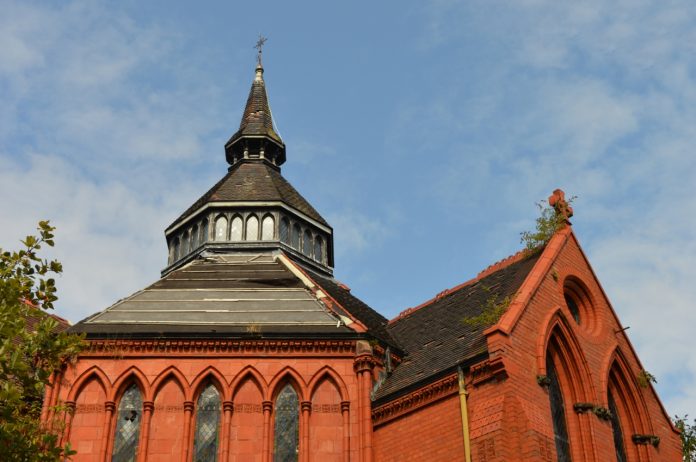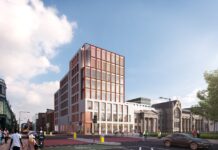The Victorian Society has released their annual Top 10 Endangered Buildings List which recognises at-risk Victorian and Edwardian buildings and structures throughout England and Wales.
Now in its eleventh year, the list aims to expose the plight of these buildings in the hope that increased awareness and appreciation will help save them.
All of the buildings on this year’s list are Grade II or Grade II* listed, and yet have been neglected for so long that they have now reached a critical point of dereliction: only urgent action can prevent them from being lost forever. The buildings include a Victorian seaside winter gardens, a set of seven London gasholders, a Victorian jam factory and attached village, and a former orphanage that was at the centre of a 2006 terrorist scandal.
Griff Rhys Jones, President of the Victorian Society, said: “What a fascinating list we have this year. It just goes to show the ingenuity of Victorian and Edwardian architects; we have buildings made of brick, glass and steel for all manner of industrial, religious and community uses. These are pieces of the history of the Victorian era and its industrial, spiritual and cultural beliefs – incredible. And this makes their current sad and neglected state even harder to swallow. Every single building on this list is crying out for redevelopment and could make something truly wonderful for its community. Join us and help them.”
Christopher Costelloe, Director of the Victorian Society, said: “This is certainly one of the most interesting top 10 lists we have had for some time, particularly when you look at the range of buildings in terms of their architecture and original uses. We’re very grateful for the continued support from the general public who nominated many of the buildings for the list, and without whom we wouldn’t know what dire straits they are in. Each building tells its own story of neglect, but there’s no denying they all have fantastic potential to be regenerated and reused for the benefit of the community.”
The full 2018 Top Ten, in no particular order, are:
- The Winter Gardens, Great Yarmouth (Grade II*, 1878-81, John Watson & William Harvey) It’s incredible to believe that this striking glass and iron structure was originally designed and constructed in Torquay and then relocated by barge all the way to its current position in Great Yarmouth in 1904, reportedly without a single pane of glass breaking. Over the years it has had many uses including as a ballroom, roller-skating rink and even a German beer garden, but now it is empty and without a use. Great Yarmouth Borough Council is currently actively looking for an investor to bring this unique, nationally-important building back into use and operate it into the future.
- Bromley-by-Bow gasholders, London (All Grade II, 1872, Clark & Kirkham) This patch of seven gasholders (the eighth was destroyed by a bomb in WW2) in east London is surrounded by industrial development but the gasholders have been left without a use for decades. They are best viewed as an imposing group from the train as the tracks run just alongside, though the intricate detail of the ironwork can only be appreciated up close. The group value of so many Victorian gasholders packed together is unmatched anywhere else in the world, making the Bromley-by-Bow gasholders a true symbol for the Industrial Revolution and historically of high significance.
- Merseyside Centre for the Deaf, Liverpool (Grade II, 1887, E.H. Banner) Initially built as a chapel for the Merseyside deaf community, this once grand gothic structure is in a terrible state. For twenty years after its closure in 1986 it was run as a successful community centre for the Igbo community, but rising costs and an aging membership forced them out in 2007 and it has been closed ever since. The community are full of ideas for its transformation, but its current severe condition means urgent works are desperately needed first for its repair and to secure it from further damage.
- Hartley’s Village, Aintree, Liverpool (three Grade II-listed buildings, 1886-95, architect unknown) Still famous as a popular brand of jam, this site is named for the former Hartley’s factory that once stood here. On the site of the factory, founder Sir Hartley built an entire village of 49 houses for his workers and in 2011 the whole site was declared a Conservation Area. Whilst the houses have enjoyed successful reuse, the remaining listed factory buildings (the main factory building was demolished in the early 20th century) have been neglected and are now largely derelict. This is an important piece of Liverpool’s industrial and philanthropic heritage and deserves to be protected, restored and celebrated.
- Former Legat’s School of Ballet, nr Rotherfield, East Sussex (Grade II, 1865, exterior: George Goldie, interior: E.W. Pugin) Hidden by thick woodland on all sides, this handsome Victorian mansion was built as a girls’ orphanage and until recently its most famous incarnation was as a ballet school from 1970-90. But in the early 1990s it was bought by a charity and run as a Islamic school, before it was raided by police in 2006 on the suspicion that it was being used as a training camp for terrorists. Since the school closed in 2007 it has remained unused and is beginning to show signs of disrepair. It is a beautiful building in large grounds and has amazing potential for reuse.
- Oldway Mansion, Paignton, Devon (Grade II*, 1873, G.S. Bridgman) Built as the private residence for American inventor Isaac Singer, this mansion was drastically remodelled by his son in the early 20th century in the style of the Palace of Versailles. The interiors are just as opulent, with an imperial staircase leading up to a ballroom on the east side and a gallery based on the hall of mirrors at Versailles on the west. Following many different functions during the later 20th century, it was used as council offices from 1946 until 2007 when the council announced its intention to sell the building. Now its future is uncertain, though the community feel strongly that it should remain as a public space.
- John Summers Steelworks, Shotton, Wales (Grade II, 1907, James France) This former office building of the John Summers Steelworks stands proudly on the banks of the River Dee, but its highly industrial location has made its reuse complicated and thus-far unsuccessful. To make matters worse, the building is subject to regular break-ins and vandalism and is now in a poor state of repair. Developers are in ownership of such a striking building which encapsulates the proud industrial heritage of the area; surely they can come up with a new reuse which showcases the building’s architectural significance in a creative and sensitive way?
- Langley Maltings, Sandwell, West Midlands (Grade II, 1870, architect unknown) These prominent maltings on the banks of the Titford Canal were saved from demolition in 2012 but with no current proposals for repair and reuse they have fallen into a very bad state. Built in 1870 as Showells Maltings, they were in use until 2006 but were victim of arson in 2009 which caused significant damage. The attractive design and prime location make them ideal for a development scheme; they just need the right developer.
- Brandwood End Cemetery Chapels, Birmingham (Grade II, 1898, J Brewill Holmes) These red brick, neo-gothic mortuary chapels stand at the highest point of Brandwood cemetery grounds and provide a dramatic central focus for the cemetery. But drama that should be evoked by the striking symmetrical design is in fact compounded by the terrible state they are in. Closed for over 30 years, they suffered a serious arson attack in 1995 which gutted the north-east chapel. A Friends group was set up in 2005 and in 2012 the council pledged more than £76,000 for their restoration, but subsequently withdrew support due to spending cuts..
- St Mary’s Convent Church, Leeds (Grade II*, 1852, Joseph Hansom & W Wardell, chancel & transepts added 1866 by E.W. Pugin) In a disused plot of land next to a high school just outside central Leeds, this imposing Grade II*-listed church is a sight to behold. Closed as a church for almost 30 years, it has had various planning applications attached to it – including an approved residential conversion scheme in 2007 – but nothing has come to fruition. Urban explorer photographs show very dilapidated interiors, though much of the detailing and stained glass seems to have survived. Such a beautiful building in a prominent location deserves much more than being left to rot.







